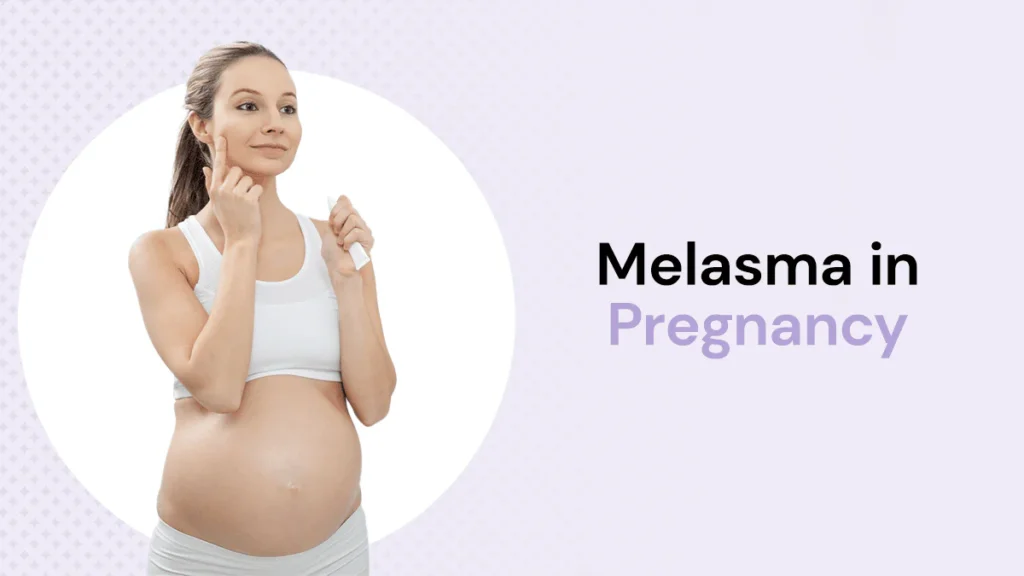Melasma is a common skin condition that causes dark, patchy discoloration, usually on the face. Often referred to as the “mask of pregnancy,” melasma affects many women due to hormonal changes during pregnancy. While it’s typically harmless, it can be distressing and affect self-esteem. Fortunately, there are pregnancy melasma treatment options that are both effective and melasma pregnancy safe.
Why Melasma Happens During Pregnancy
During pregnancy, your body undergoes significant hormonal fluctuations, especially increased levels of estrogen and progesterone. These hormones stimulate melanocytes—cells responsible for producing pigment (melanin)—leading to dark patches, especially on sun-exposed areas of the face such as the forehead, cheeks, and upper lip.
This condition is so common during pregnancy that it’s often referred to medically as chloasma or the “mask of pregnancy.” Genetics and sun exposure also play a role in melasma’s development.
Safe and Effective Pregnancy Melasma Treatments
1. Sun Protection is Non-Negotiable
Sun exposure is one of the biggest triggers for melasma. Protecting your skin from UV radiation is the safest and most effective way to prevent melasma from worsening during pregnancy.
- Broad-Spectrum Sunscreen: Use a physical (mineral) sunscreen with zinc oxide or titanium dioxide. These are pregnancy-safe ingredients and offer excellent protection.
- SPF 30 or Higher: Apply every morning and reapply every 2 hours if outdoors.
- Protective Clothing: Wear wide-brimmed hats, sunglasses, and stay in the shade when possible.
2. Gentle Skincare Routine
During pregnancy, it’s important to avoid irritating your skin, as inflammation can worsen melasma.
- Use a mild cleanser that’s free of sulfates and fragrances.
- Avoid harsh scrubs and exfoliants that can inflame the skin.
- Moisturize daily to maintain a healthy skin barrier.
3. Safe Topical Ingredients for Pregnancy Melasma Treatment
Not all skincare ingredients are safe during pregnancy. Avoid products with retinoids, hydroquinone, and salicylic acid in high concentrations unless directed by a doctor. Instead, focus on safer alternatives:
- Azelaic Acid (10-20%): A naturally occurring acid that helps reduce inflammation and pigmentation. It is considered safe for use during pregnancy.
- Niacinamide: This form of vitamin B3 brightens the skin and helps control pigment without irritation.
- Vitamin C (L-ascorbic acid): An antioxidant that gently fades discoloration and boosts collagen production.
- Licorice Root Extract: A plant-derived ingredient known to inhibit melanin production.
- Tranexamic Acid (topical): Often safe in topical form, but always consult your doctor before use during pregnancy.
4. Avoid High-Risk Ingredients
The following ingredients are commonly found in pigmentation treatments but should be avoided during pregnancy:
- Hydroquinone: While effective, it is absorbed systemically and not recommended during pregnancy.
- Retinoids (retinol, tretinoin, adapalene): Linked to birth defects and contraindicated.
- Chemical Peels (high concentrations): Many contain salicylic acid or other strong actives that are not safe during pregnancy.
What About Professional Treatments?
Most in-office treatments like chemical peels, laser therapy, and microneedling are not recommended during pregnancy. These should be postponed until after delivery or once you’ve finished breastfeeding.
However, a board-certified dermatologist can guide you through low-risk options and build a melasma pregnancy-safe regimen suited to your skin type.
Post-Pregnancy Melasma: Will It Fade?
For many women, melasma improves or even disappears after childbirth, once hormones normalize. However, in some cases, it may persist and require further treatment. Postpartum, you can consider stronger topical agents or procedures like:
- Hydroquinone
- Retinoids
- Chemical peels
- Laser therapy
Be sure to continue sun protection long-term to prevent melasma from returning.
Summary: Pregnancy Melasma Treatment That’s Safe and Effective
| Treatment Option | Pregnancy Safe? | Benefits |
|---|---|---|
| Mineral Sunscreen (SPF 30+) | ✅ Yes | Prevents melasma from worsening |
| Azelaic Acid | ✅ Yes | Fades discoloration, anti-inflammatory |
| Niacinamide | ✅ Yes | Brightens skin, improves skin barrier |
| Vitamin C | ✅ Yes | Antioxidant, lightens pigmentation |
| Gentle Moisturizer | ✅ Yes | Maintains skin health and barrier |
| Retinoids / Hydroquinone | ❌ No | Avoid during pregnancy |
| Laser / Chemical Peels | ❌ No | Postpone until after pregnancy |
Final Thoughts
While melasma during pregnancy can be frustrating, it’s manageable with the right approach. A consistent, melasma pregnancy safe skincare routine—centered around sun protection and gentle brightening ingredients—can make a noticeable difference. Always consult your OB-GYN or dermatologist before starting any new treatment, especially when pregnant.




